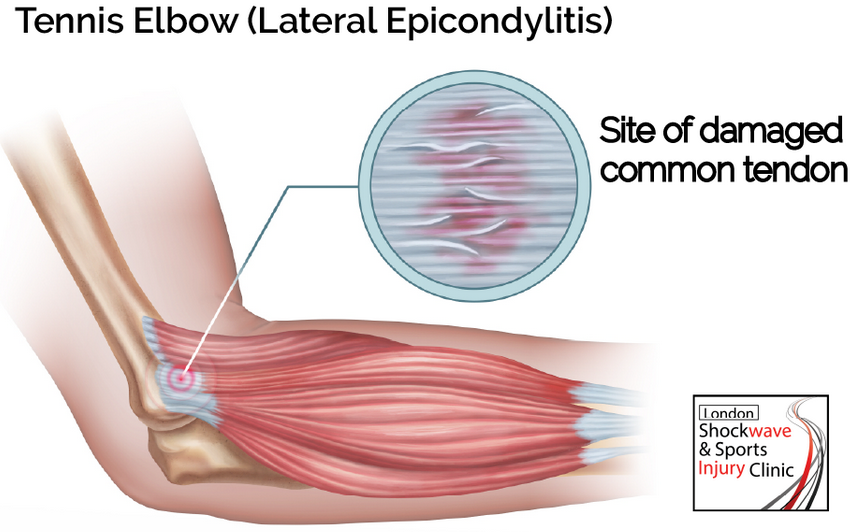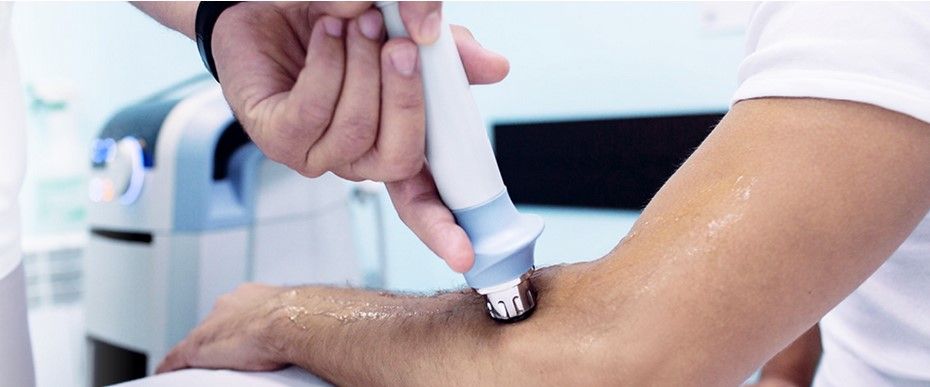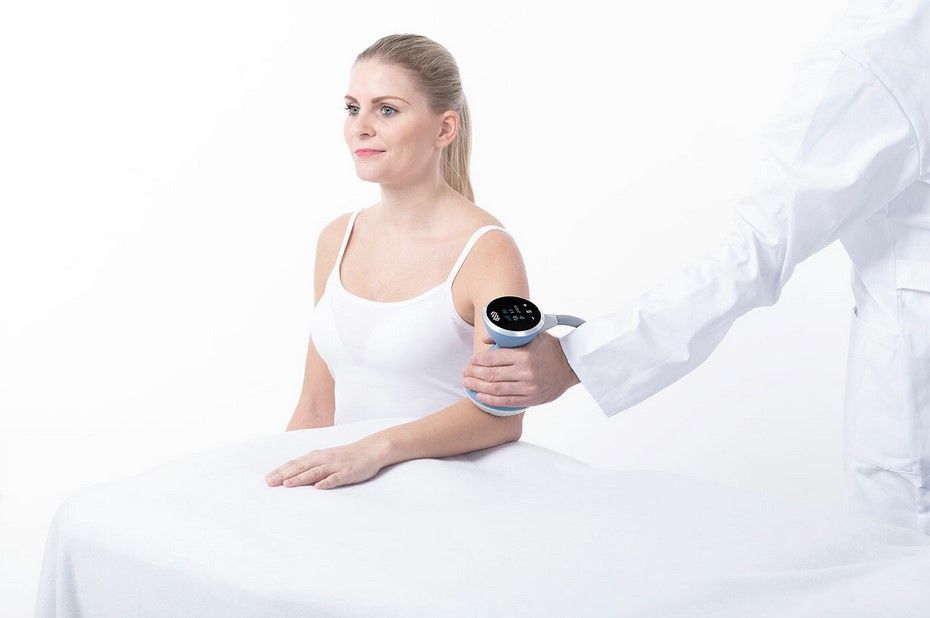Does shockwave therapy work for tennis elbow
Tennis elbow, also known as lateral epicondylitis, is a common condition that causes pain and tenderness in the outer elbow. It is usually caused by overuse of the forearm muscles and tendons, often due to repetitive activities such as gripping, lifting, and twisting. Tennis elbow can be debilitating, affecting daily activities and interfering with work and sports. Traditional treatments for tennis elbow include rest, ice, physical therapy, and medication, but a relatively new treatment option has emerged: shock wave therapy.
Shock wave therapy (SWT) is a non-invasive treatment that uses high-energy sound waves to stimulate healing in damaged tissues. It has been used successfully to treat various musculoskeletal conditions, including plantar fasciitis, Achilles tendinitis, and rotator cuff tendinitis. More recently, shock wave therapy has been used to treat tennis elbow with promising results.

The procedure involves applying a hand-held device that emits shock waves to the affected area. The waves penetrate deep into the tissues, stimulating the growth of new blood vessels and promoting the formation of new collagen, which is essential for tissue repair. The shock waves also stimulate the release of growth factors, further enhancing the healing process.
One of the advantages of shock wave therapy for tennis elbow is that it is non-invasive and requires no anaesthesia. The treatment is typically performed outpatient and takes about 15-20 minutes to complete.
Is shock wave therapy comfortable when treating Tennis elbow?
Patients may experience discomfort during the procedure, which can be managed with pain medication or numbing cream, although rarely required, especially with a Focused type of SWT, painless SWT, which gives less sensation to the skin.
Is shock wave therapy in London effective for Tennis elbow, Lateral Epicondylitis?
Research on the effectiveness of shock wave therapy for tennis elbow is still ongoing, but early results are promising.
A 2019 systematic review and meta-analysis of eight randomised controlled trials found that shock wave therapy was more effective than placebo in reducing pain and improving function in patients with tennis elbow. The study also found that shock wave therapy was as effective as other standard treatments, such as corticosteroid injections and physical therapy.
In addition to being practical, shock wave therapy for tennis elbow has several other advantages over traditional treatments. It is non-invasive and does not require surgery, so there is little risk of complications or side effects. The treatment also has a short recovery time, and patients can typically return to normal activities within a few days.
While shock wave therapy for tennis elbow is still a relatively new treatment option, it shows great promise as a safe and effective alternative to traditional treatments. If you are suffering from tennis elbow and are interested in exploring your treatment options, talk to a qualified & insured practitioner at our Wimbledon-based clinic in southwest London to see if shock wave therapy may be right for you.

Which type of shock wave therapy is best for tennis elbow (lateral epicondylitis)?
Several studies have compared the effectiveness of radial shock wave therapy and focused shock wave therapy for treating lateral epicondylitis (tennis elbow).
One study, published in the Journal of Orthopaedic Surgery and Research in 2018, compared the effectiveness of radial shock wave therapy and focused shock wave therapy in treating lateral epicondylitis. The study included 60 patients randomly assigned to receive either Radial or Focused shock wave therapy. The results showed that both types of shock wave therapy effectively reduced pain and improved function in patients with lateral epicondylitis. However, there was no significant difference between the two types of treatment in terms of pain reduction or functional improvement.
Another study, published in the American Journal of Sports Medicine in 2018, compared the effectiveness of radial shock wave therapy and focused shock wave therapy in treating chronic lateral epicondylitis. The study included 60 randomly assigned patients receiving either radial shock wave therapy or focused shock wave therapy. The results showed that both types of shock wave therapy effectively reduced pain and improved function in patients with chronic lateral epicondylitis. However, there was no significant difference between the two types of treatment in terms of pain reduction or functional improvement.
A third study, published in the Journal of Orthopaedic Research and Therapy in 2021, compared the effectiveness of radial shock wave therapy and focused shock wave therapy in treating chronic lateral epicondylitis. The study included 80 patients randomly assigned to receive either radial or concentrated shock wave therapy. The results showed that both types of shock wave therapy effectively reduced pain and improved function in patients with chronic lateral epicondylitis. However, the study found that focused shock wave therapy was significantly more effective than radial shock wave therapy in reducing pain and improving function in patients with chronic lateral epicondylitis.
Overall, while both radial shock wave therapy and focused shock wave therapy are effective in treating lateral epicondylitis, some studies suggest that concentrated shock wave therapy may be more effective than radial shock wave therapy in reducing pain and improving function in patients with chronic lateral epicondylitis.
However, further research is needed to confirm these findings and determine the optimal type of shock wave therapy for treating lateral epicondylitis.
What is our experience of treating tennis elbow with both types of ESWT (radial and Focused)?
We have been blessed at our Wimbledon facility to have access to both radial and focused shock wave therapy types. This excellent facility and over ten years of expertise in the use of shock wave therapy means we have seen a lot of clients with Tennis elbow.
Most clients we see for F-ESWT have been referred to our Wimbledon Clinic department, as almost every injection and conventional rehab treatment has failed. This often means the tennis elbow severity is high on the spectrum, or some adjacent tissues have also been injured.
Due to these factors, we often hunt around the epicondylitis site to see if another tissue is involved and treat these as part of your session. A good MRI report will also fill these areas for us. Although the different regions of inflammation may not have been conveyed to the client when talked through the report.
Because of this, a consult at our clinic is the first step to evaluate or source this data before 1 st ESWT session.
We have found the radial type of shock wave therapy was hard to tolerate for clients, and they preferred the Focused shock wave therapy (F-ESWT). This ability was a fantastic result as this enabled us more time to treat the client and could do the adjunct areas to stimulate the other parts of the elbow.
If you would like to book a consult for ESWT treatment on tennis elbow: Please call today or leave a message through our enquiry form. click contact us

Request a call back to learn more
If you're coping with painful Epicondylitis think shock wave therapy could help, we'd love to help. Request a call back now to find out if this effective treatment could be suitable for you.